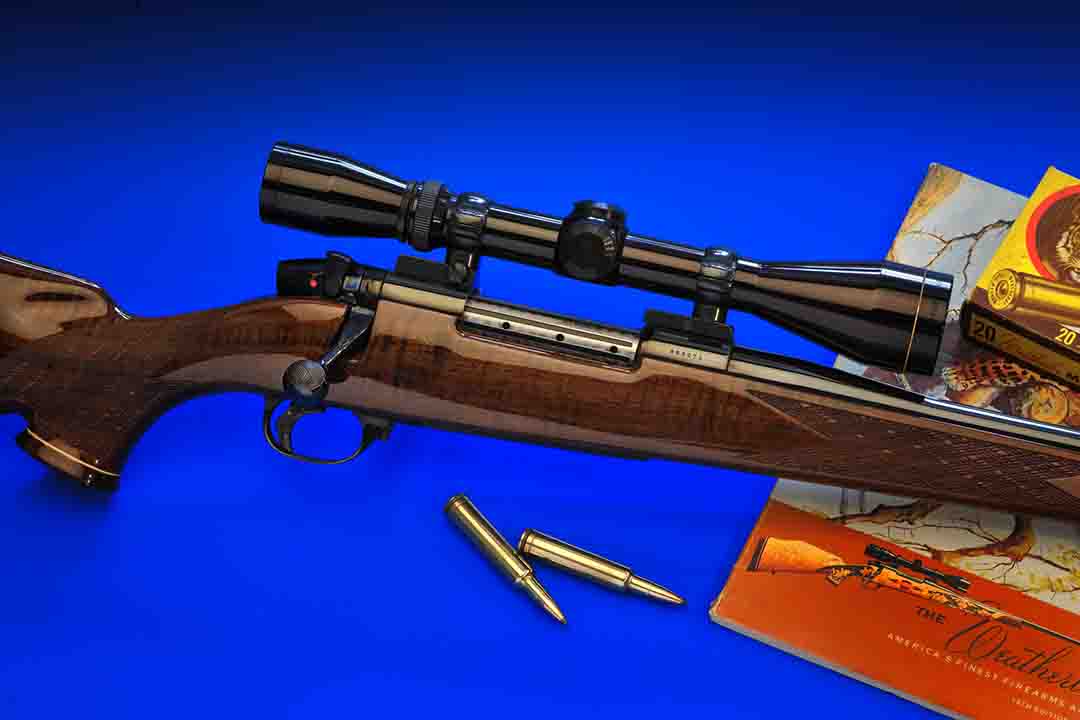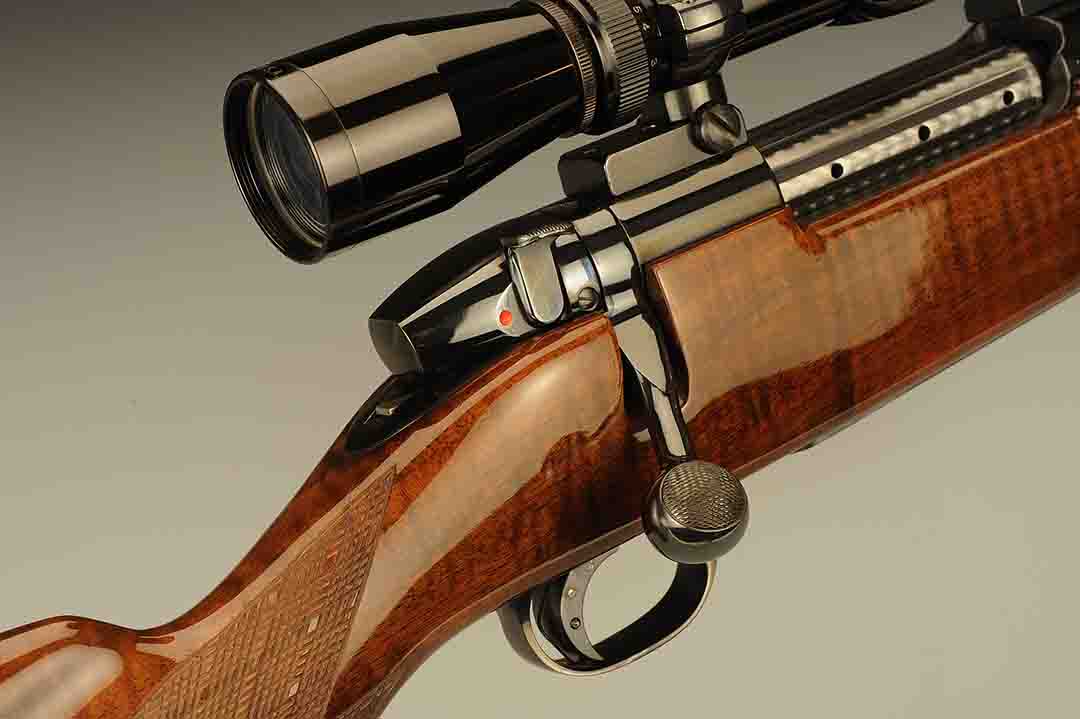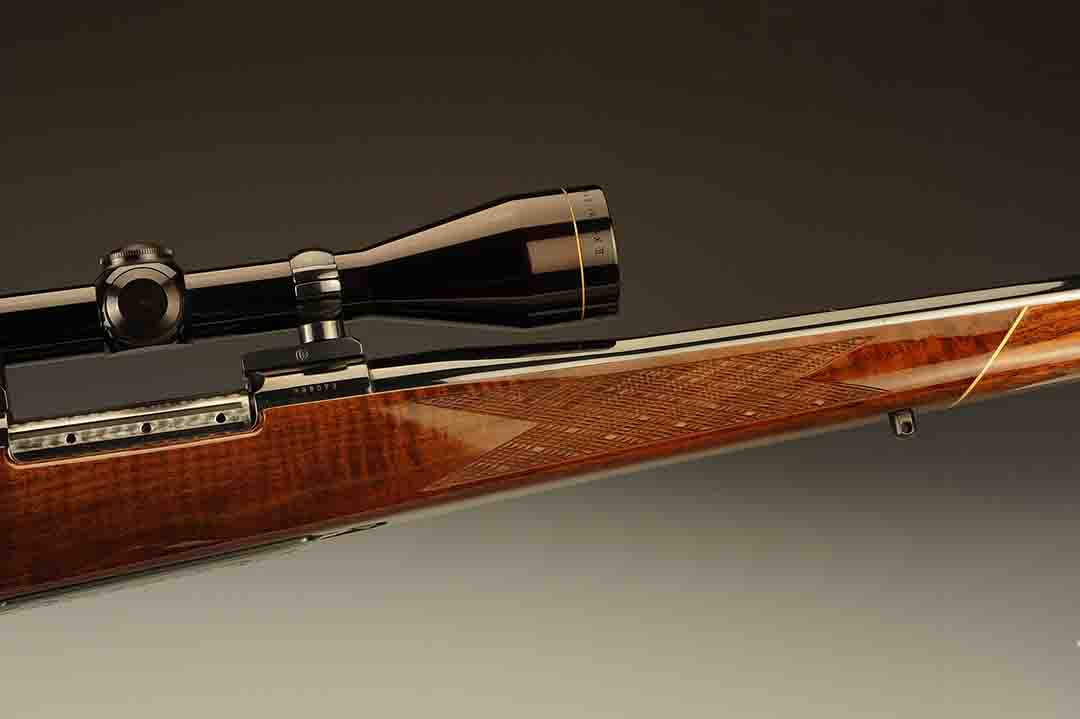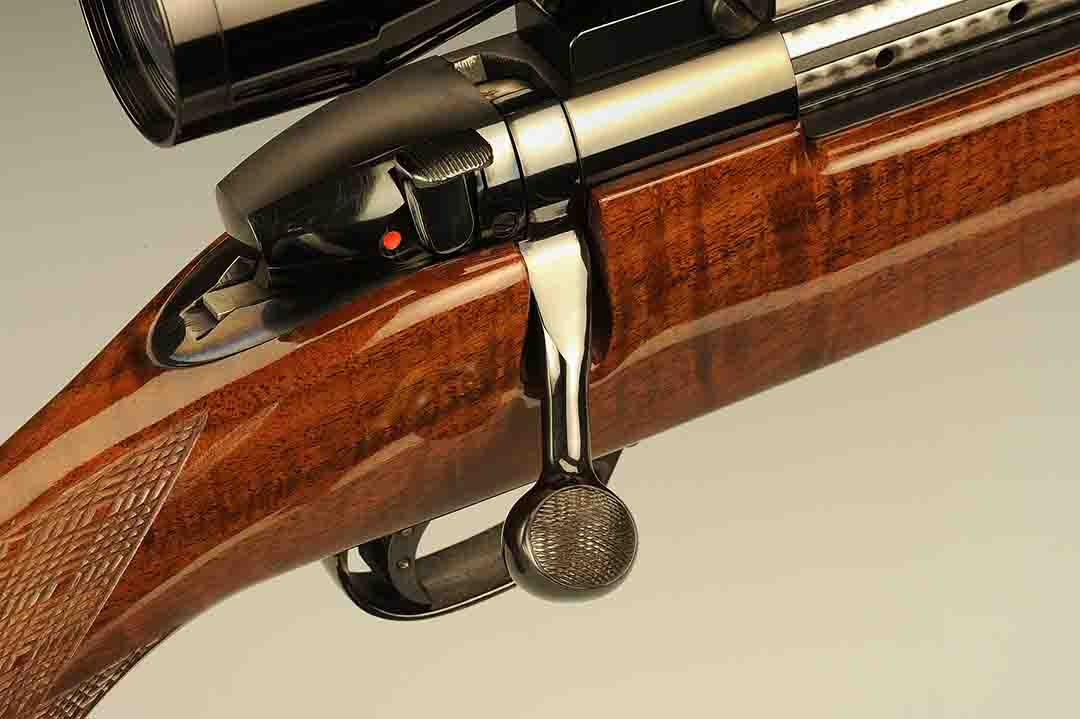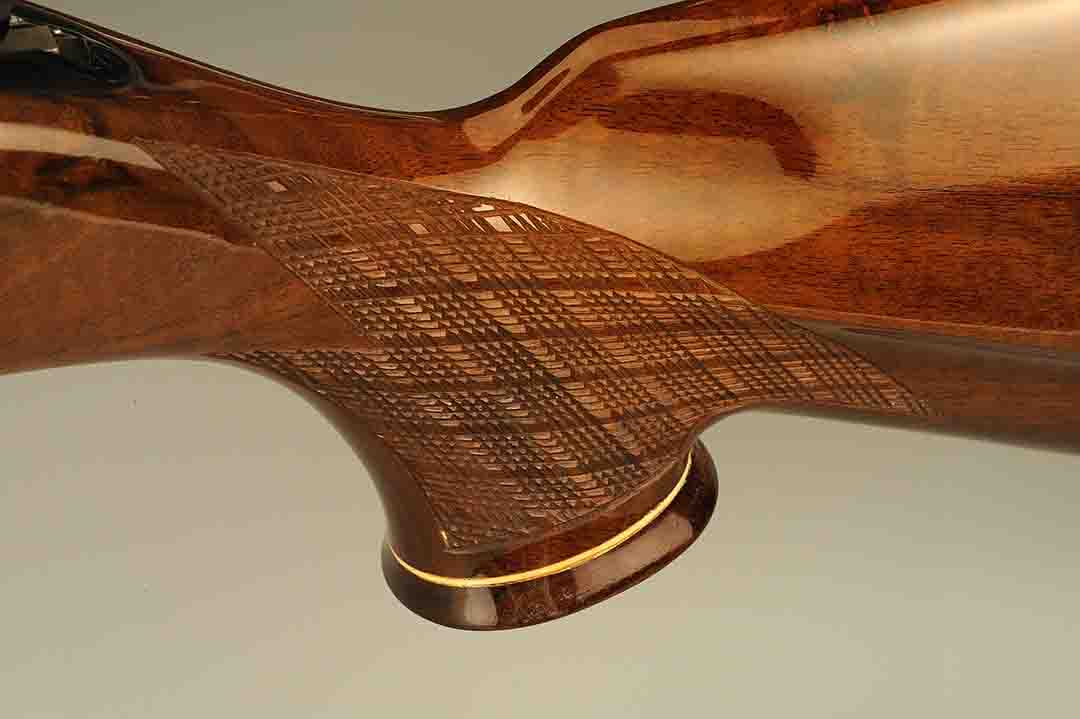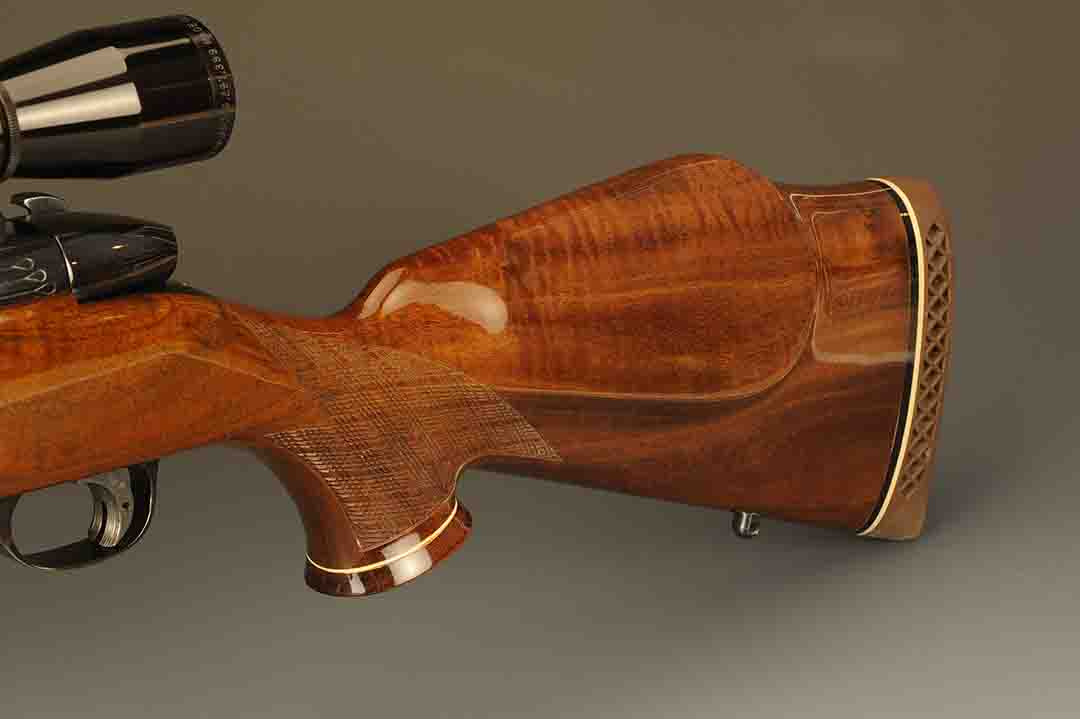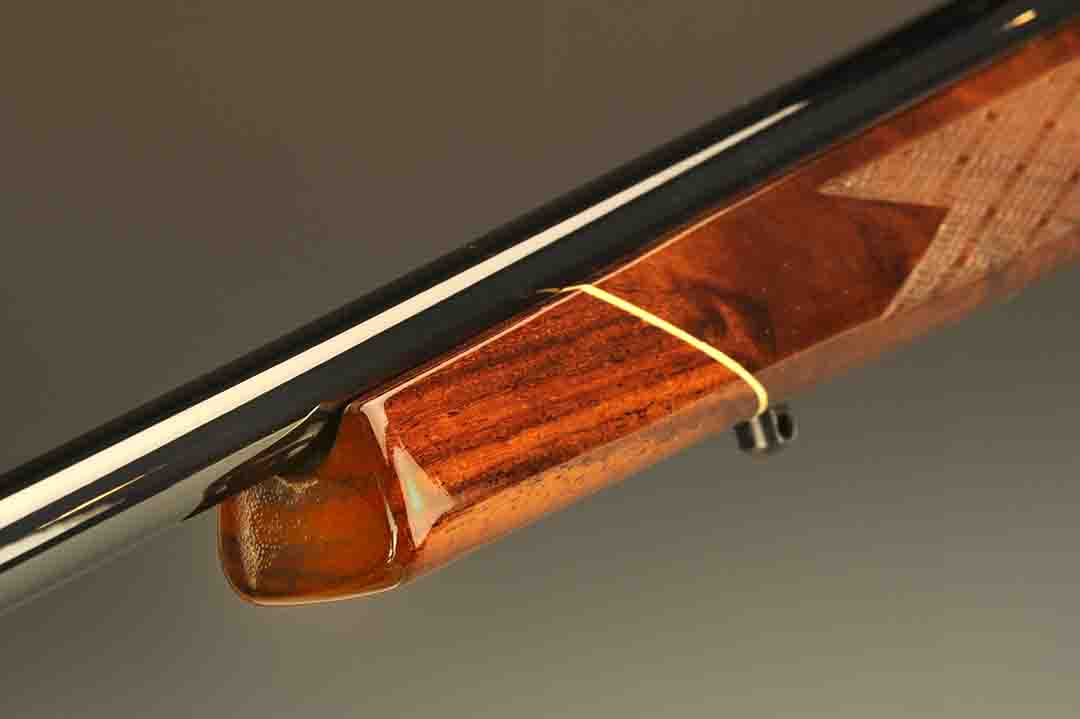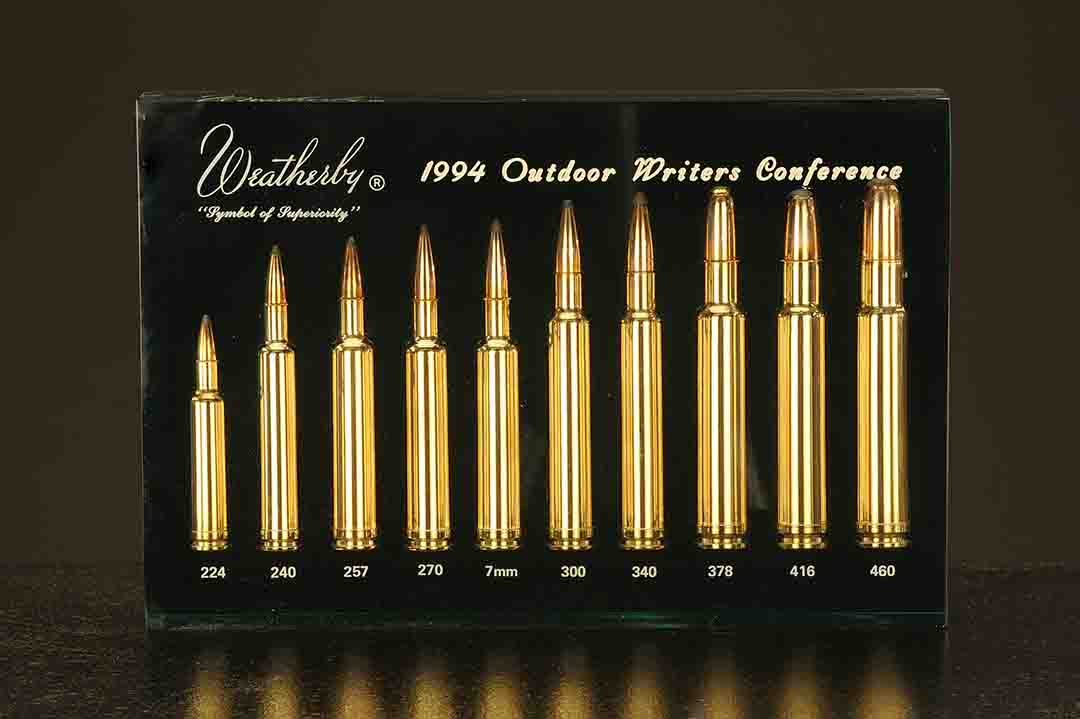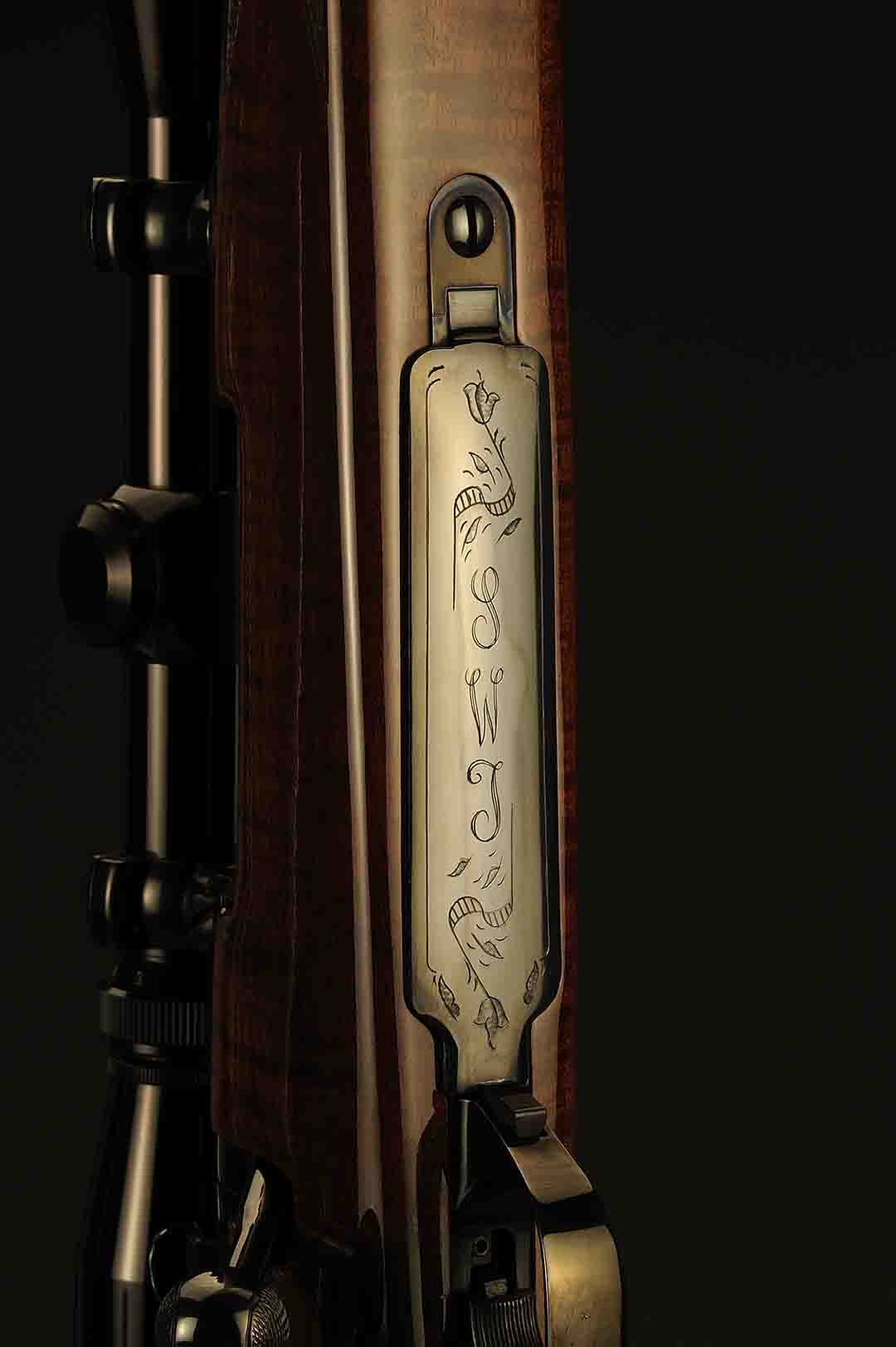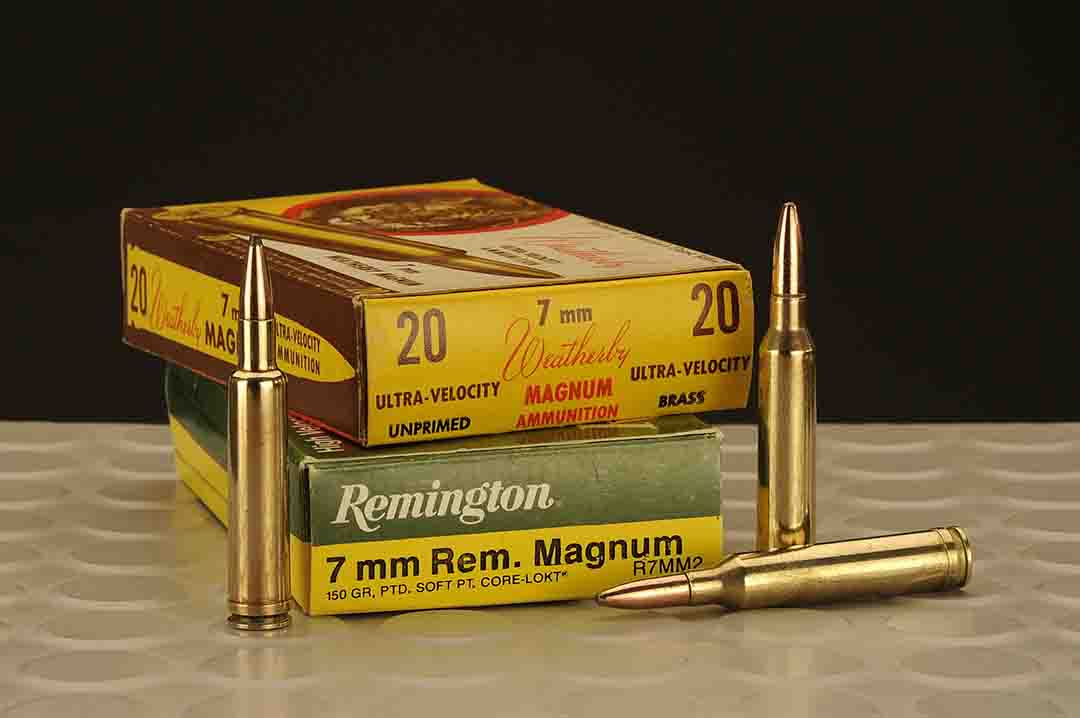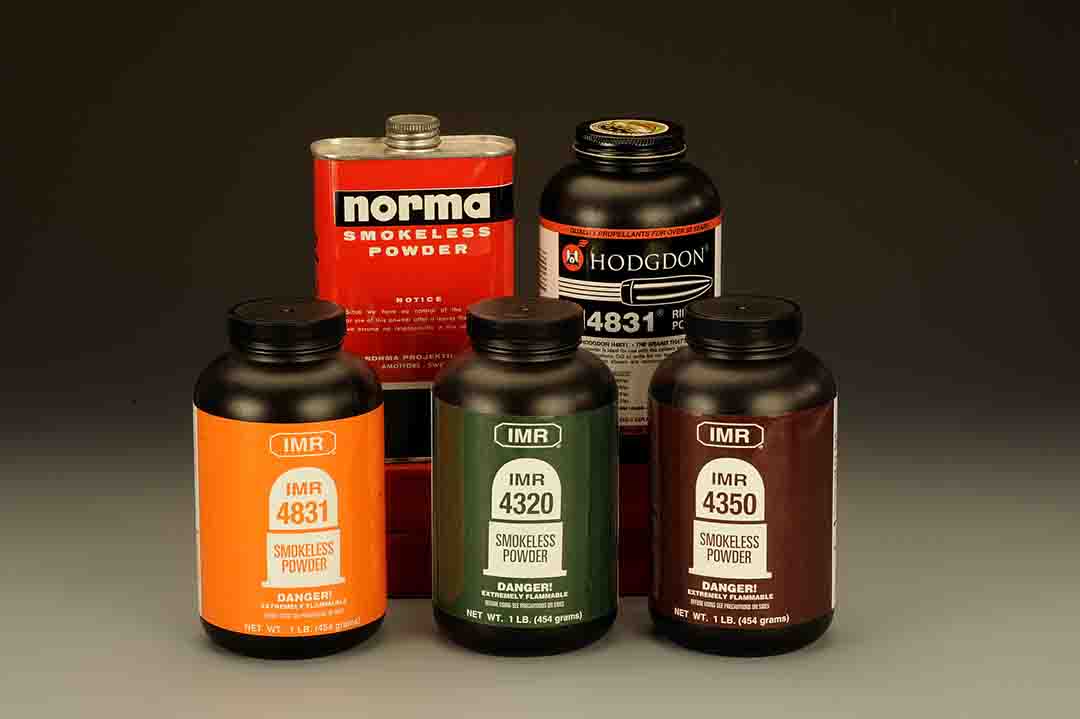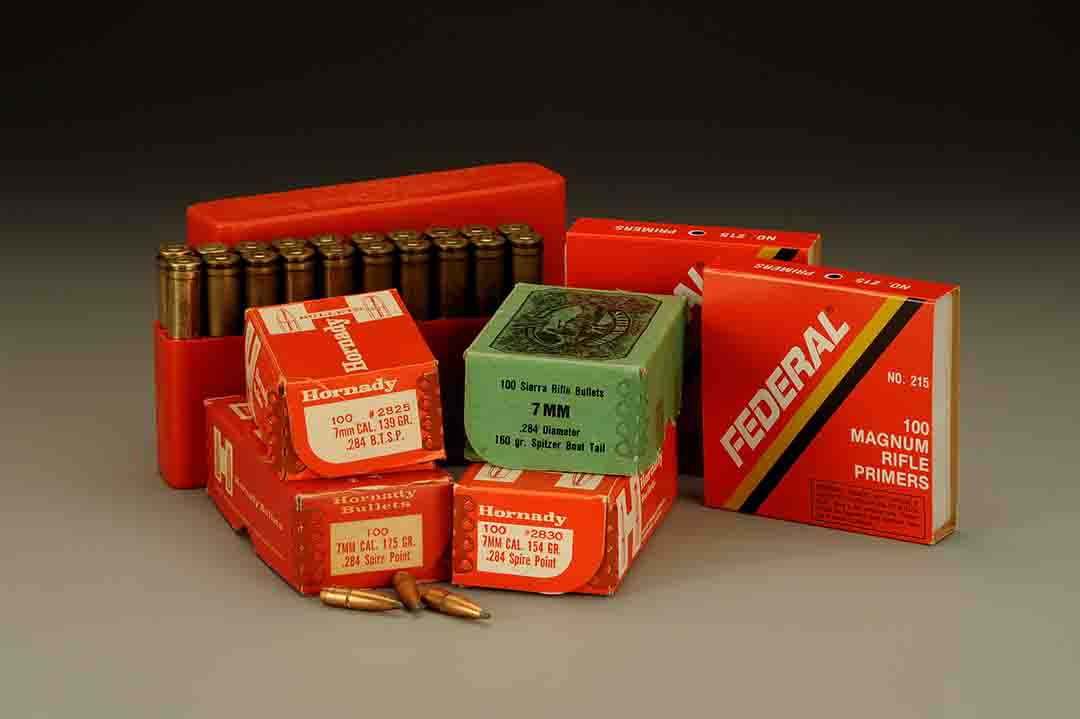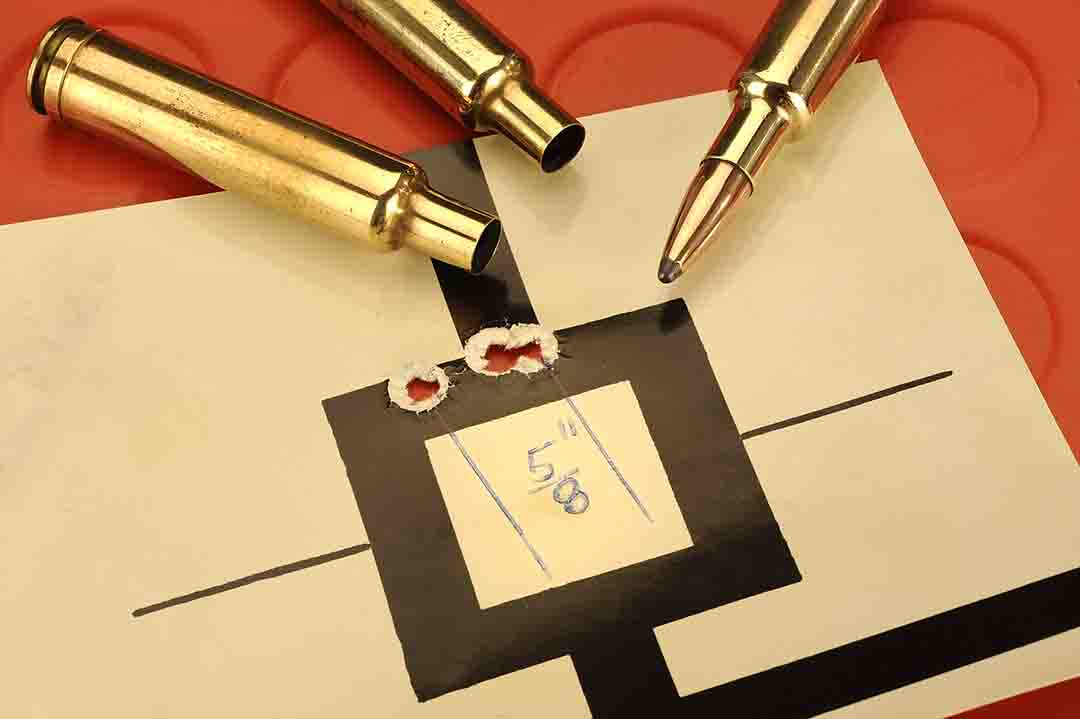Weatherby’s Mark V in 7mm Magnum
other By: Stan Trzoniec | January, 26
They say you never forget your first girlfriend or your first Weatherby rifle. I can remember both like it was yesterday, but since I did not marry that girl, she is but a memory of my high school years. When it came to my Weatherby rifle, I see it often sitting in the rack in my gun room and it is a reminder of the pleasure I had picking it up, outfitting, testing and working up handloads for this particular rifle chambered for 7mm Weatherby Magnum.Roy Weatherby’s approach to centerfire rifle design is no more apparent than his lasting profile of his Mark V rifle. Chambered in the 7mm Weatherby Magnum, Stan added some custom features to the gun when he ordered it.When designed by Fred Jennie, he incorporated a streamlined and fluted bolt, a covered shroud complete with a handy safety lever and an easily accessible bolt handle.For years, the Mark V has been recognized as a first-class sporting rifle, if only by its unique profile with fancy wood stocks that included a high, forward sloping comb and a squared-off forearm that in later years, seemed to push some of the competitors in the same direction.
Starting out on a shoestring in California, the company’s production then went to Sauer in West Germany, Howa in Japan, Saco Defense in Maine and Paso Robles, California. Recently, a few short years ago, management took it upon themselves to build a full line production facility in Sheridan, Wyoming, where as I understand it, more than 90 percent of the facility is dedicated to the Mark V.Forward of the pistol grip, the forearm of the gun is square in design and includes the skip line point checkering pattern. Weatherby introduced the forend tip when his Mark V was introduced.Checking my logbook, I ordered this rifle in July 1973. I took delivery of the gun in September and after a few letters to Roy Weatherby himself on what I would like (if possible) in a stock, it came just as I had requested with dark wood with pronounced fiddle back figuring along the length of the stock. Mr. Weatherby had helped this customer and I appreciated it.
Additionally, I ordered some “special features” for the gun with prices then too hard to believe today with the costs noted in brackets below. For starters, I had the customized action, which included a hand-honed action, a jeweled bolt and follower, fully-checkered bolt knob and a custom engraved name plate [$60], of which I added the cost of my initials [$30]. On the stock, I added a rear extension to the checkering [$25] and finished off with a Canjar single-set trigger [$25]. The cost of the rifle at that time was $449; with the “custom” features, it came to under $600. Quite a deal, not to be touched today for sure, as the factory only offers a few of these options, which adds $425 to the price for a total of $2,924. Quite a difference over almost 50 years in the making.
Closer in, readers can see the detailing of the checkered bolt knob, safety lever, cocking indicator and streamlined bolt shroud.In any event, I was and still am, pleased with my 1973 version and note some slight differences in the stock on current guns. For one, the buttstock is thinner, includes a cast-off and the comb line is slightly different with the pistol grip flaring on the bottom to allow the hand a “memory” groove as such. Of course, no Weatherby would be a true Weatherby without the famous diamond inlay in the pistol grip itself. The forend tip is squared-off more, there are maple spacers and the checkering is more traditional, not skip line as in the past and the quality of the wood is good, but today, one would have to look far and wide to get a really nice, figured piece, which was not too much of a problem in the “old days.”Here, we can see the pronounced flair at the base of the pistol grip cap acting to position the hand on the pistol grip when shooting. Skip line checkering adds to the appeal of this rifle.With a forward sloping comb, all of the apparent recoil is taken away from the face of the shooter. The cheekpiece is standard as is a cast-off on the stock either to the right or to left depending on shooter preference.The receiver, barrel, and other parts of the action still have that Weatherby glow and brilliance in a fine, high-gloss finish with matte as a no cost alternative. The barrel is 24 inches with the option of ordering the rifle with a 26-inch tube, with the shorter barrel in a sporter contour ending up with a muzzle diameter of .550 inch.
When it comes to the bolt, those who have never seen a Weatherby action seem to marvel at this part of the rifle in particular. For one thing, there is no outside extractor as seen on the more common Mauser-styled bolts. Instead, and thanks to the design features placed there by Weatherby designer Fred Jennie, they are referred to as “large or fat bolts” with one common diameter from one end to the other adding to its smoothness, acting much like a piston within a cylinder.
There are nine lugs around the bolt (the .240 WM to the .30-06 Springfield have six as did the Varmint Master when it was available) while the Remington’s, Winchester’s and others have two, adding to the gain of only a bolt lift of only 54 degrees versus 90 degrees on the competition; a bonus on follow-up shots and scope mounting. Flutes add to the smoothness of the action only because the lack of debris caught between the bolt and receiver are vastly reduced, as is the friction of the bolt’s operation, simply because it does not touch the follower. With the “customized action” option, only a slight tip of the gun released the bolt moving it to the rear.One can’t have a Weatherby rifle without the customary forend tip. Made from rosewood and including a white line spacer, it has been part of the Mark V since its beginning. Note the high shine of the barrel.Additional features within the bolt and receiver show that Weatherby has chosen to counterbore the bolt face to enclose the case head for additional strength surrounded by the barrel and machined receiver. There is a spring-loaded ejector within the bolt face, three gas escape vents on the bolt, with the bolt shroud incorporating both a cocking indicator and safety lever. To set this rocking safety, pull it back for safe, forward to fire. At rest, the bolt handle fits into a machined groove within the receiver for additional strength, all barrels are hammer forged and the trigger is adjustable for pull. From the factory, the barrel is clean and the receiver is drilled and tapped for commercial scope bases from a wide variety of manufacturers. To all this I added a Leupold 3-9x 40mm scope in the then popular Redfield rings and bases. Ordered in the 7mm Weatherby Magnum, I was set to go.
With some of the more recent additions missing, here in this photo, are the line of Weatherby cartridges from the .224 to the thunderous .460 Magnum. The subject of this story is the 7mm version shown here – fifth from the left in this “family portrait.”So why the 7mm Weatherby Magnum? First, it was one of the original Weatherby cartridges introduced around 1944 and was sometimes referred to the outdated and underpowered 7mm Mauser that at that time was about all you could compare it to in cartridges. The idea was to design a cartridge that could handle just about any kind of North American big game with the advantage of using it on many of the thin-skinned game of Africa. While handloading seems to be the way to go today with commercial ammunition reaching almost five dollars a round on some bullet weights, factory loaded ammunition is available from Federal, Hornady, Weatherby and Norma of Sweden (who also loads Weatherby brand ammunition) with its 170-grain Oryx brand. Federal offers the popular and ballistic favored 160-grain weight. Hornady offers its 154-grain and 175-grain bullets in their factory loads, with the Weatherby Plus ammunition showing the 120-, 140-, 150-, 154-, 160- and 175-grain selections in its catalog. If a shooter is looking for a happy medium here, there is not much that cannot be handled by a good 154- or a 175-grain bullet in the 7mm Magnum that seems to be the bestseller and price in the Weatherby stable.To personalize his rifle, Stan had Weatherby engrave his initials on the floorplate. Like the rest of the metalwork on the gun, it has a high polish and bluing.Here are the two top 7mm cartridges to include the Weatherby and Remington commercial versions. Both are good sellers.At the time, I was young and had visions of big-game hunting, so the 7mm was a good choice. I took the gun to Wyoming to hunt mule deer and antelope and fell in love the wide-open spaces and the challenge of long-distance hunting, which of course, the seven millimeter was aptly suited for in this part of the country. However, it did not take me long to figure out the gun was a bit much for such hunting and once I was turned on to the .257 Weatherby, the big 7mm was put away for future use.
In defense of the 7mm WM, Roy Weatherby introduced it in the mid-1940s. Based on the parent .300 Holland & Holland case, it was necked down to .284-inch caliber and included the famous Weatherby double radius neck and shoulder with a straight body taper matching cousins .240, .257 and the .270 with the same body profile designed to feed from a standard length action. Like Remington usually does, they countered with its 7mm Remington Magnum in 1962, but could not quite match the ballistics of the
Weatherby product. Using a 175-grain bullet, the Weatherby 7mm hit the chronograph at 3,070 (feet per second) fps with 3,663 foot-pounds of energy (fpe). The Remington 7mm, not to be upstaged by this California icon, came close with 2,860 fps with 3,178 fpe. In short, the Weatherby version not only beat the Remington brand by 8 percent in the velocity department, but more than 15 percent in muzzle energy. The only redeeming feature here was the Remington Model 700 was in more supply and could be purchased at a lower price.Noting the larger capacity of the 7mm Weatherby, slow-burning powders, like the group shown here, show the best results in velocity and accuracy.Handloaders have nothing to worry about when it comes to bullets or primers for the 7mm Weatherby. Most all are good performers and with bullet weights up to 175 grains, this caliber can be used on a multitude of game.Nevertheless, the 7mm Weatherby still intrigued me and I spent a great deal of time reloading this cartridge. Turning to my logbook again, I started out with 56.4 grains of IMR-4320 to help break-in the barrel and came away with groups averaging about 1.5 inch on the first go around. A few months later, I took the gun to the range and shot more than 100 rounds with a mix using the 139-grain Hornady (with 58.3 grains of IMR-4320 around 3,000 fps) with 1.092-inch group. The 154-grain Hornady Spire Point with 68.9 grains of IMR-4831 for 3,100 fps hit the paper with a 1.100-inch group and finally, the best of the lot – the Hornady 175-grain Spire Point with 67.7 grains of IMR-4831 for 3,000 fps with some great groups averaging .960 inch. A few months later, I tried the same Hornady 175-grain Spire Point over 69.6 grains of IMR-4831 for some tight half-inch groups at 100 yards. It was obvious that the more powder I placed in the big case, the better this 7mm performed.
At 100 yards, this group measures a curt .625 inch. The recipe consists of a Hornady 175-grain spire point bullet over 69.6 grains of IMR-4831 powder, all set off with a CCI 250 primer.In retrospect, the Weatherby Mark V rifle was a dream come true for Roy Weatherby. I knew Roy, talking to him on the phone, through correspondence and at shows; sadly, he passed away in April 1988. Now celebrating over 75 years in business, I’m sure he is proud of his company, taken over by son Ed and grandson Adam, thus assuring his legacy will continue for years to come.


